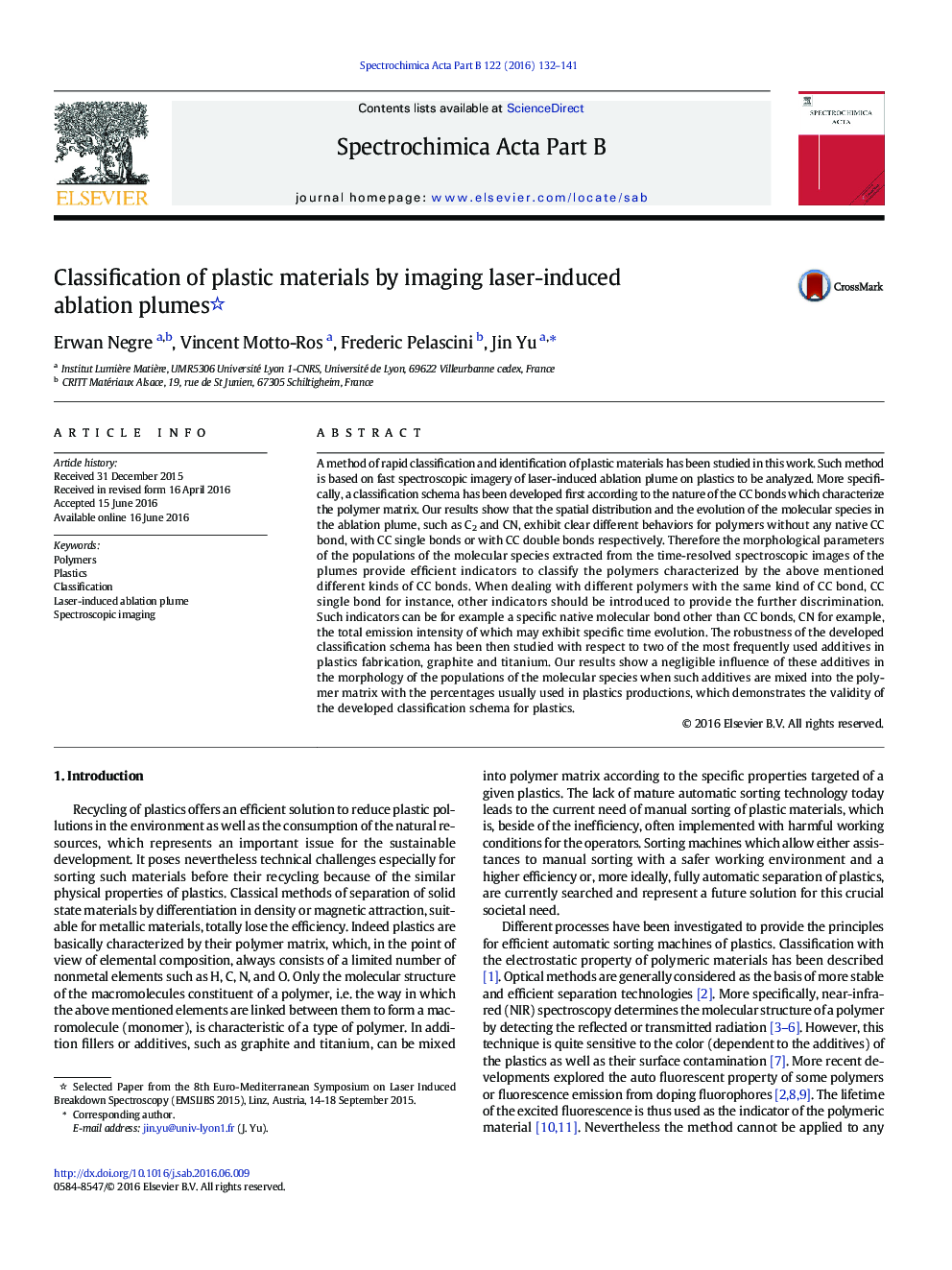| Article ID | Journal | Published Year | Pages | File Type |
|---|---|---|---|---|
| 1239562 | Spectrochimica Acta Part B: Atomic Spectroscopy | 2016 | 10 Pages |
•A classification schema of polymers based on spectroscopic image of the C2 population in ablation plumes•Time evolution of the emission from CN radicals as an indicator of polymers with native CN bonds•Robustness of the classification schema tested with respect to usual additives for plastics production•A simple method for fast plastics sorting by imaging ablation plumes without need of spectrometer
A method of rapid classification and identification of plastic materials has been studied in this work. Such method is based on fast spectroscopic imagery of laser-induced ablation plume on plastics to be analyzed. More specifically, a classification schema has been developed first according to the nature of the CC bonds which characterize the polymer matrix. Our results show that the spatial distribution and the evolution of the molecular species in the ablation plume, such as C2 and CN, exhibit clear different behaviors for polymers without any native CC bond, with CC single bonds or with CC double bonds respectively. Therefore the morphological parameters of the populations of the molecular species extracted from the time-resolved spectroscopic images of the plumes provide efficient indicators to classify the polymers characterized by the above mentioned different kinds of CC bonds. When dealing with different polymers with the same kind of CC bond, CC single bond for instance, other indicators should be introduced to provide the further discrimination. Such indicators can be for example a specific native molecular bond other than CC bonds, CN for example, the total emission intensity of which may exhibit specific time evolution. The robustness of the developed classification schema has been then studied with respect to two of the most frequently used additives in plastics fabrication, graphite and titanium. Our results show a negligible influence of these additives in the morphology of the populations of the molecular species when such additives are mixed into the polymer matrix with the percentages usually used in plastics productions, which demonstrates the validity of the developed classification schema for plastics.
